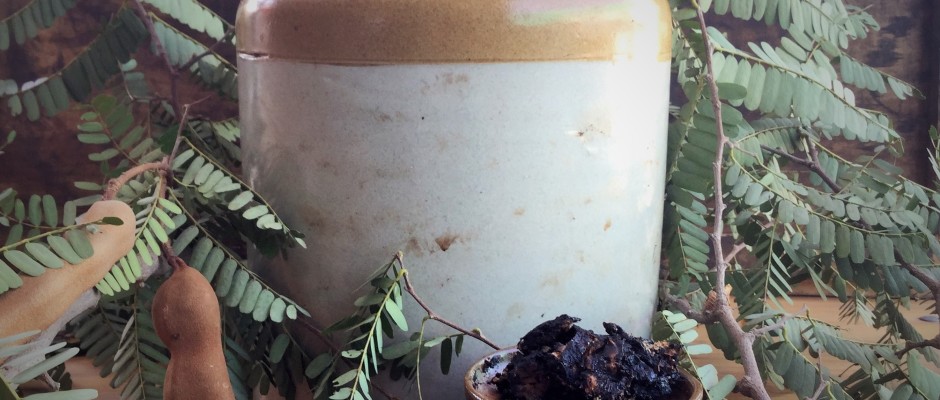Hindu metro plus , The sour truth
If your childhood consisted of plucking ripe tamarind pods fresh off the roadside trees then you must know that it’s that time of the year again.The branches swaying in the wind result in unfolding a carpet of tamarind that remain undamaged thanks to being ensconced in the hard outer shell. Once the flesh inside has reached the mature state of ripening,the outer turns brittle and opens when pressed,with a satisfying pop and crackle.
It’s funny how we think of tamarind trees as being typically Indian when actually they originated in the African sub-continent.An Indian diet too is rather incomplete without this tangy fruit,don’t you think? My school friends even today salivate over the vendaikkai paal kozhambhu made at mom’s which is a heavenly concoction of tamarind pulp and coconut milk .And yet how many of us really take notice of the many benefits associated with including the pulli in our daily fare.Not everyone is aware that the tamarind harvest is done only once a year.Sadly, only few continue the tradition of preserving freshly picked tamarind.
To be able to understand the importance behind using a particular ingredient one has to start at the very beginning.Around the time of the harvest festival is when most tamarind trees are ready for picking and this can continue until the middle of February.
I hadn’t given this much thought until friends who owned and operated grocery stores lamented over the fact that ‘if only people went back to seasonal procurement of ingredients’.The decline of the availability of fresh organic tamarind was because people stopped buying in bulk to last the whole year. Since they wanted it on demand throughout the year additives needed to be added to keep the tamarind from spoilage. Why are such practices being dis-continued citing a lack of time when in reality it is time that is invested in maintaining one’s health… or would we rather just leave that up to doctors and hospitals and their growing band wagon of care givers ?!
I realized there was no point in educating others about this process until I tried it out myself. While I have been fortunate to have my mother-in–law and my mother carry on that practice all these years, last year I realized it was time I started on it myself.It was not only an extremely fascinating experience it was also highly educational on so many levels and not that hard either.Tamarind pickers offer their services for a few weeks during this time forsaking all other work.They earn a good revenue as they are skilled at making sure that not much fruit is left on the bough once they are done. So , you see , such customs don’t just serve to fulfill one purpose.Quite the contrary in fact ! The environment is treated as it should be by respecting seasonal bounty , the skilled labourers’ livelihood is assured , no interference of middlemen whose pockets get filled thanks to packaging and processing ingredients which grow along our road sides and above all we take charge of what we put into our body and because of that we will undoubtedly reap the benefits arising from the same !
The process of preserving tamarind remains unchanged and rather simple though time-consuming; Once the outer shell is split open the fruit is left out in the sun.This is the first stage of preserving. After that it is gently pounded with a wooden mallet which helps in loosening the seeds and separating the fibres from the soft ochre coloured pulp.All that remained to be done after that was to get out my big earthenware jaadi and layer it in intervals with tamarind pulp and natural rock salt.It has to be filled to the brim so as to allow the minimum amount of air to be trapped in.The lid with the wooden seal at the bottom must then be tightly pressed down in order for the salt to merge with the pulp and start to work at softening and aging the young tamarind flesh. Back then neighbourhoods would collectively invest in the tamarind harvest and share in the pickings,it was just that simple.
The seeds are sold separately not only for craft purposes but in the making of extracts that are believed to be rich in polyphenols and flavonoids.The sticky pulp itself for that matter is supposedly a rich source of dietary fibre and aids greatly in digestion.The lemon sized ball of the dark ,well preserved tamarind that we use every day in our typical South Indian meals are in fact loaded with phytochemicals,antioxidants and enough vitamins and minerals to contribute considerably to our daily dietary intake. How’s that for an ingredient we barely stop to take notice of while eating !
Again here moderation is the key to good health. An overdose of tamarind can have the opposite effect to wellness! If you have noticed the quantity of ingredients placed on a banana leaf in accordance with a traditional South Indian meal, the lip smacking inji pulli or pavakkai puli always finds place next to the pickle and the serving is that of a tea spoon full only. That little quantity goes a long way in slurping up every bit of the creamy curd rice and all is well in tummy world ! Fortunately our rasams and pulli kozhambhus too contain just the right balance. A popular baker uses this aged condiment to add depth of flavor to her Christmas cakes. Aged , dark , squidgy and loaded with a whole lot of zing…There’s much more to the humble tamarind than what meets the eye,that’s for sure !





No comments yet.